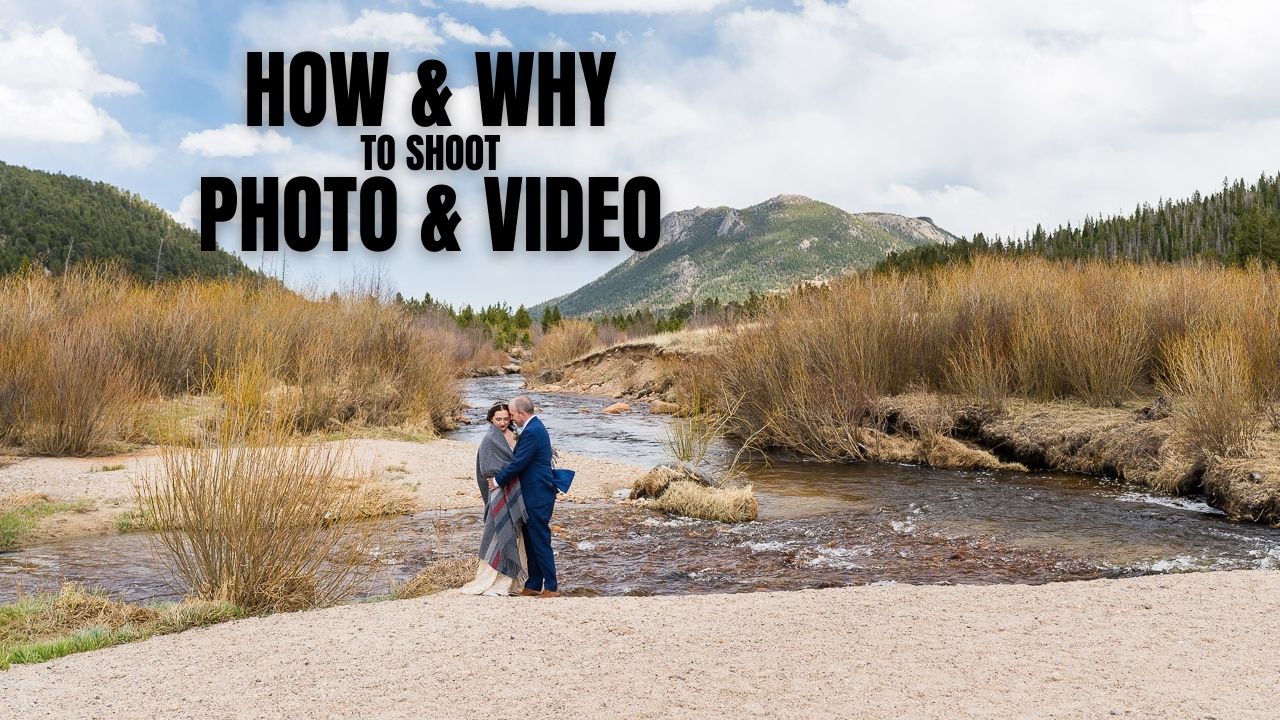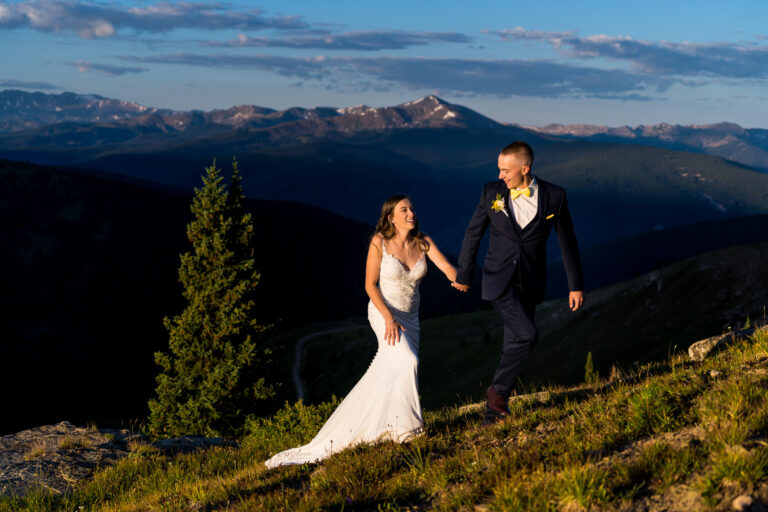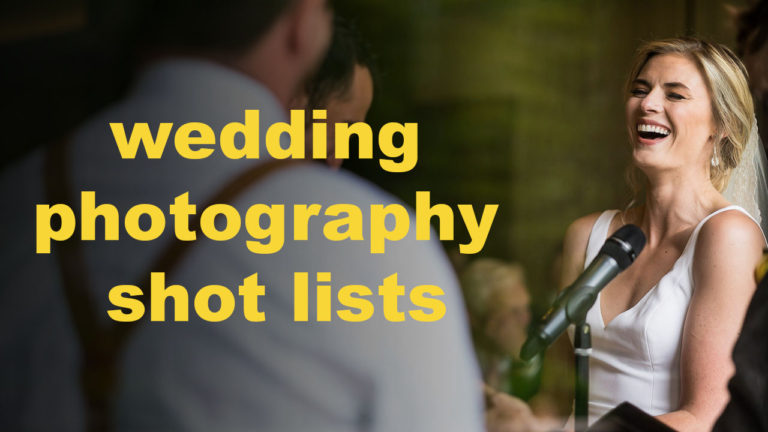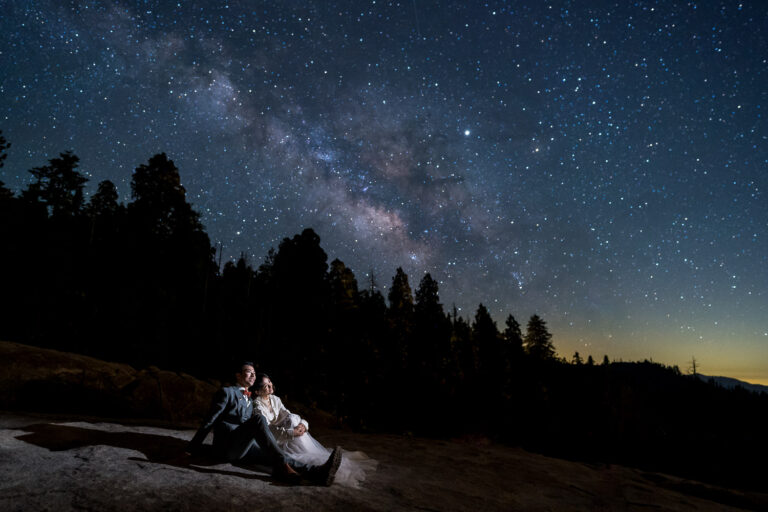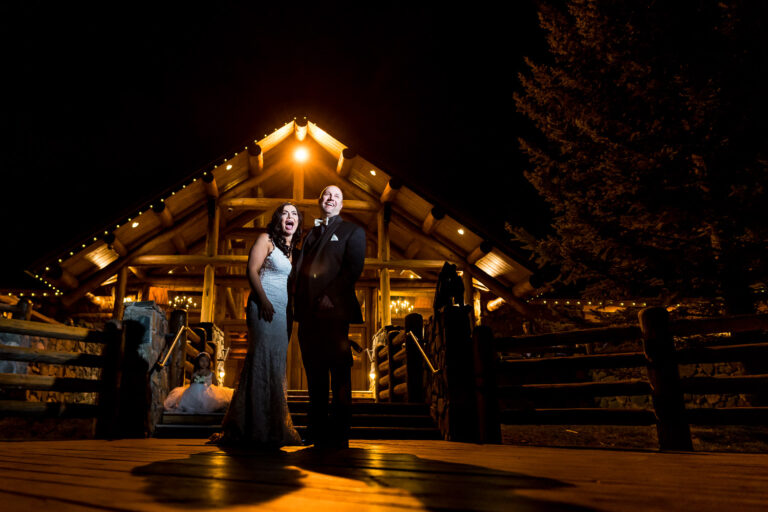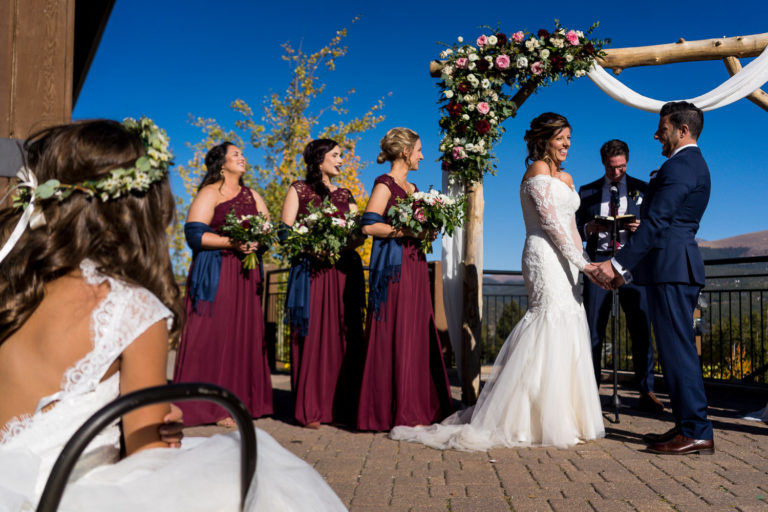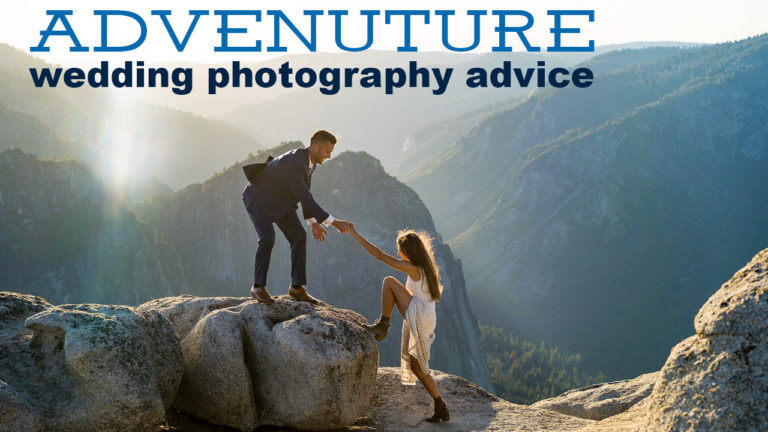how to shoot wedding photo and video
You may have noticed that we’ve been offering more wedding photo and video packages. For years we resisted because it was too hard to be worth it. Now, it’s easy enough to stop saying no when couples ask so today we’ll talk about why and how to shoot photo and video wedding packages.
Here’s what changed. Better gear, smaller weddings, and experiencing the advantage of teamwork.
The story behind why we started to shoot wedding photo and video
When COVID hit, our business changed a lot. Everyone was pivoting so much we were dizzy. As our wedding business sank, our commercial business grew. With commercial photography, photo and video was already an advantageous combo deal so being able to do both was important.
People realized that COVID was ongoing and they weren’t going to wait forever to get married. Suddenly, videography became more important to the wedding world than ever before.
From a business standpoint there’s obviously an advantage to offering photos and videos. But it’s a lot of work on a stressful day where you only get one chance to get the shot.
When we had previously attempted to do photo and video, we realized how hard it was and decided against it. There were too many barriers. The gear wasn’t quite there yet and the demand wasn’t so high that we felt the need to jump.
Most of our couples valued having two dedicated photographers and we loved working together as a team. Therefore, over the years we worked with numerous videographers and quickly learned the ones we loved to work with. Having a photo and video team that meshes well can make a wedding day.
Similarly, having one that doesn’t can break it.
Ok, that’s an exaggeration. However, if multiple professionals have vastly different styles it can make it hard to do your thing. If a photojournalistic photographer is working with a highly directive videography, how does the photojournalist capture real candid moments?

the shift to photo and video
Enter COVID and smaller weddings where certain guests can’t attend for a variety of reasons. Slowly, more and more couples were finding the need for photo and video. Simultaneously, the gear was also getting to the point where we could shoot photo and video on the same camera.
We still love working as a team but we realize that not all mini weddings need or want two photographers. However, a photo video team might be exactly what they need.
Our videography skills had improved enough to feel confident that we could handle the stress of the wedding. At the same time, the gear could handle it and more of our couples were asking for it. Saying yes started to be easier.
The top 2 reasons to shoot wedding photo and video
major business benefit to serve our clients more
Shooting wedding photo and video is a win-win. First, it allows us to shoot less weddings throughout the year and focus on our clients and their experience. Second, it allows us to work together seamlessly.
Rather than introducing a separate video team that may or may not have a similar shooting style.
One of the main advantages of shooting photo and video at a wedding is that it allows us to shoot less weddings. We can aim for quality over quantity. Some photographers aim for volume, they shoot 50-100 weddings a year. We on the other hand prefer to shoot less weddings.
One of my favorite things about what we do is getting to know our couples and telling their stories. We’ve always prided ourselves on giving our couples a great experience and really caring about them. Our mantra is serving your clients well will serve you well.
Offering photo and video allows our small business to work harder and smarter for less clients. We can offer more to our clients. From a business perspective that means bigger packages. For them it means one stop shopping and an awesome team.
teamwork is super helpful if a couple wants photo and video
Which brings me to reason number two. We have been shooting together for over a decade, needless to say we work together really well as a team. We’re found that our teamwork was able to easily adapt to shooting photo and video.
As a team we know what the other person is looking for. We are able to work together to help each other accomplish individual and collective goals. This makes us super efficient and effective.
Alternatively you have the photographer directing the couple and then the videographer directing the couple until everyone has their shots. It can almost get competitive. Instead, we’re able to work together to get all the shots.
Additionally, over the years we’ve worked with videographers that make our job harder. They shoot differently than we do. Or we’re all taking precious time out of a tight timeline and unknowingly get in each other’s way.
Working together as a team, I know how to stay out of my teammates’ way. I know what he’s doing when and why and how. We have similar goals and priorities.
I know, I know. All vendors should have the same goals and priorities, we’re all there working for the couple. You only have to experience one or two bad co-vendor experiences to know that’s not always how it plays out.

Gear for wedding photo and video
I’ll let Marc talk more about this in a separate post but one of the main barriers to shooting photo and video was the gear. It’s expensive to have all the gear for wedding photography or wedding videography. Not to mention for wedding photography and videography.
People don’t always realize the value of the gear that we have to have on hand. In general, the cost of running a business is often overlooked when people calculate how much a photographer should cost. Newbie photographers often undercharge until they realize how expensive it can be to maintain a website, hire an accountant, buy gear, fix that gear, replace the gear, purchase all the software, and the list goes on.
But, the game is changing. When I can shoot photo and video on the same camera I don’t need twice the gear to offer both. Videography does require some additional audio gear. However for the most part we’ve been able to keep our gear list fairly simple and minimalistic so that it doesn’t slow us down.
For more about our gear philosophy, check out some of our popular posts and YouTube videos.
In my opinion one of the most important things when it comes to wedding photography and videography gear is that it doesn’t slow you down. Start simple and build as you can handle it because otherwise you’ll be overwhelmed and that will impede your creativity.
How we shoot wedding photo and video
Now, onto the ins and outs of how we actually go about shooting wedding photo and video.
1. What does the couple want and need from you
The first thing I always try to remember is who I am serving. Sure, I might be in the mood to make some artsy off the wall creative image or video but what does my couple want? If you start there and let that be your minimum, you’re sure to please your clients.
I focus on making sure I’m getting content that will help my couple remember how amazing their wedding day was. Sometimes, simple clean images are impactful and clear crisp audio of dad’s speech is game changing. Start there and then get creative and build on your main goal.
As creatives we have super high standards for ourselves. I always want to be creating my best work, push my limits, and tap into creativity each time I go out. But my client doesn’t always need my best, sometimes they just need solid high quality timeless work.
The client doesn’t necessarily need a billion hours of creative edgy unique b-roll, but they do need to see that mom cried and their spouse looked at them adoringly. We can get caught up in what we want to create and forget why we’re there. If we remember why we’re there it actually makes our job easier.
2. Two people is still better than one
While I could do it if I had to, shooting photo and video interchangeably all day long is still super challenging even if the gear can handle it. Your brain has to be able to switch between the two modes and sometimes on a wedding day things are happening too fast to juggle all of that.
Additionally, if you’re trying to do too much you’re not going to be able to slow down enough to capture amazing candid moments.
If you are one person trying to do both, I would have a clear system for what you’re shooting when. More on that below.
3. Who’s in charge of what
Now, once you have your team, the best teams have each person playing a specific position with specific goals. For the entirety of our career we’ve worked on dividing roles so that everything gets done. Ok, in the beginning when we hadn’t figured that out yet we were both doing everything and majorly stepping on each other’s toes.
When it comes to shooting photos and video it’s all about figuring out what needs to get done, who’s going to do it, and how we can help support each other.
We’ve never worked in the one primary shooter and one assistant or second shooter model where we’re both essentially doing the same thing with one of us as a glorified back-up. Instead, when we shoot together we always work to compliment each other and build each other up, free each other up to be more creative or to experience. For example, we’re always both working on capturing two different and unique photos from one moment such as if one of us is shooting a wide photo, one of us is shooting tight.
3b. that whole teamwork thing again
The point of mentioning that is to say that even if you’re a photographer who hires a second shooter, I think you could train your second shooting to provide value rather than just fill the shoes of “second shooter” so that you can bill for it. I haven’t worked with many second shooters so I’m sure I don’t know what I’m talking about but I do know that feeling values and having purpose makes us better creatives.
Therefore with the transition to shooting photo and video, it makes sense to have roles and responsibilities in the same way and then work to compliment each other. So in general, instead of both of us trying to do all the things at all the times, one of us focuses on video and one focuses on photos for the majority of the day. If there are certain times when we need to switch between photo and video we identify those times ahead of time and make a plan.
For example, if getting ready is happening in a way that it’s logistically hard for us to go back and forth between the rooms then that would be a time that both of us might be shooting photo and video. For me, I still usually time-block. Rather than trying to constantly be doing both, I focus on photos and then I focus on video.
What this means is that you have to trust your teammate and relinquish control. Instead of micromanaging, work together. Instead of stepping on each other’s toes, lift each other up. And then the photo video team dream really comes alive!
4. Systems
I am not a fan of shot lists but I am a big fan of systems. There’s nothing worse than having a list of a hundred pictures I need to take and then stressing all day about checking them all off the list. However, having a system for how I shoot or what types of pictures I’m looking for certainly decreases stress and increases creativity.
For video, you can have a plan for when exactly you mic people up, where you place your tripods, and when you gather b-roll. Make a plan for when and how you’re going to get all the shots you need for whatever videos you’re delivering. The more you can feel confident you have the content you need the more you can relax and get creative.
Think of it the same as the rules of photography. You have to know about composition and lighting but once you know the rules and understand why they work you can play with breaking them and discovering something creative.
We would rarely put video footage of posed family pictures in a wedding video, so rather than one of us shooting video at that point one of us can direct the family while one of us shoots the photos which allows those photos to be more efficient. If one of us wants to create an elaborate lit portrait and needs help, we can work together to make that happen because shooting video of that moment might not be that beneficial.
5. Back-up gear can become usable gear
Little do couples and guests and the ladies walking their dogs on the street know but we often carry a really nice camera and another really nice camera in our bag in case anything happens to that first camera. No mistakes allowed, we can’t risk missing a moment.
So even though the gear can easily switch back and forth between photo and video mode, you could have one of your cameras designated for photo and one for video. That way you reduce any errors that might happen while changing settings and you can keep one rigged up to a gimbal if that’s your thing.
Summary of how to shoot wedding photo and video
Thanks for visiting this post on how to shoot wedding photo and video. If you love the idea you’ll want to align your marketing too.
I don’t think that shooting photos and videos is easy. I don’t think it’s for everyone. And beginners beware.
Weddings are hard. They are stressful, fast paced, and overwhelming. But, as you gain experience they can be exciting and entertaining and endless fuel for your creativity.
In some ways, shooting wedding photo and video has opened up new storytelling avenues for both of us. We’ve expanded what we can do as a team with the incredible capabilities of our gear to really serve our clients.
Stay tuned for some upcoming blog posts on photography gear, creativity, wedding advice, and more.
Next, you might like these posts on tips for wedding photographers:
- How to Overcome Fear of Starting a Business
- How to Be a Wedding Photographer
- Tips for Outdoor Wedding Photography
- Wedding Photography in the Rain
- Beyond Contracts and Shot Lists
- How to Price Wedding Photography
- Wedding Settings Guide
Or this recent Roxborough state park wedding photo and video
Finally, boost your creativity with this creativity meditation or these creativity affirmations.
We are Marc and Brenda Bergreen, a husband and wife photography team specializing in Colorado wedding photography and videography and other adventures.
Don’t hesitate to contact us and let us know how we can help! Be sure to follow us (weddings instagram & adventures instagram) and/or like us (facebook) to stay tuned.
In the meantime, remember to…


